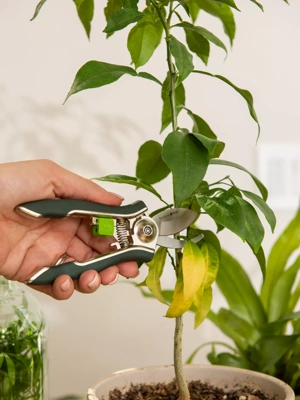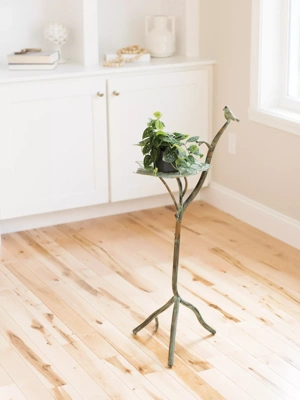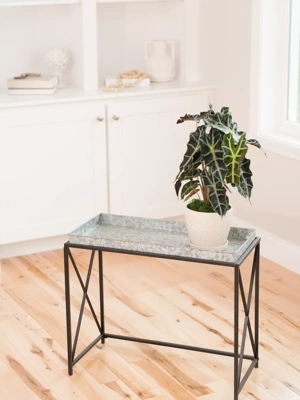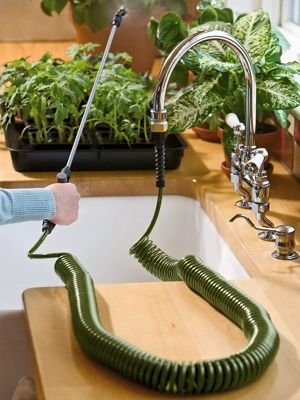How to Care For a Bird's Nest Fern
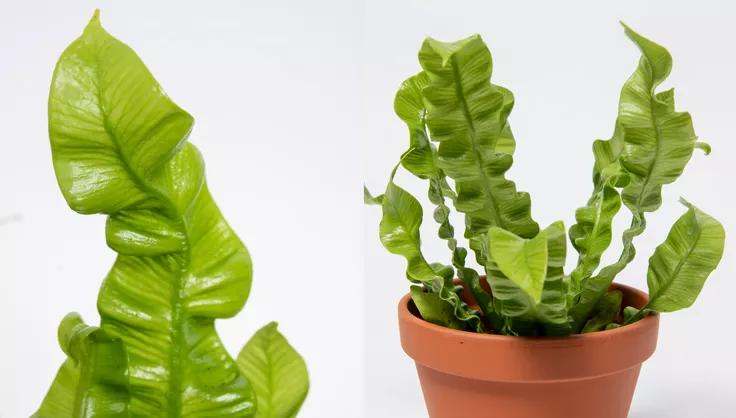
Bird's Nest Ferns are known for their large, ripple-edged leaves (called "fronds" on a fern) that grow from a central rosette, resembling a bird's nest. They come in a variety of types, from the classic bright green to varieties with curly or wavy fronds. Although they can grow on the ground in soil, bird’s-nest ferns are largely epiphytes in their native habitat — meaning they perch in tree limbs and pull moisture and nutrients in via the air.
Choosing Your Fern
Just when you thought the bird's nest fern couldn't look funky enough, plant breeders have bred even wilder-looking cultivars:
Asplenium nidus 'Crispy Wave': known for having wavy, thick fronds
Asplenium nidus 'Osaka': fronds have heavily curled edgess
Asplenium nidus 'Crissie': fronds boast tiny hand-like forks at their ends
Asplenium hybrid 'Austral Gem': a hybrid variety with glossy, feathery fronds, it looks quite different than other bird's nest ferns
Best Growing Conditions For Bird's Nest Ferns
Light
Bird's nest ferns love indirect, moderate light – think of their native tropical canopy. A spot near an east or north-facing window is perfect. Direct sunlight can burn their delicate fronds.
Soil
A well-draining, rich potting mix is ideal. You can mix regular potting soil with some orchid bark and perlite for extra drainage – this mimics their natural habitat, growing on tree trunks.
Humidity
Bird's nest ferns will tolerate average home humidity levels, but will really thrive in higher humidity levels (40% and up). Invest in a humidifier or give it an occasional mist if you live in an especially dry climate or have your winter heating cranked up high.
How To Care For Bird's Nest Ferns
Watering
Keep the soil consistently moist but not soggy. Water when the top inch of soil feels dry, and direct the water so it doesn't pool up in the central rosette — this can cause crown rot, which is the end of most plants. They’re sensitive to chlorine and fluoride in tap water, so rainwater or filtered water is best.
Fertilizing
Feed your fern a diluted, balanced liquid fertilizer once a month during the growing season (spring and summer). Over-winter, they need less feeding, so you can skip it.
Pruning
Generally, pruning isn’t necessary. If you spot brown or damaged fronds, trim them off at the base to keep your fern looking tidy.
Repotting
Bird's nest ferns don’t mind being a bit root-bound, but if you notice roots coming out of the drainage holes, it’s time to repot. Spring is the best time to do this.
Propagation
Propagation is a bit tricky since they don’t produce runners or offsets. The most reliable method is by spores, but this requires patience and a bit of a green thumb.
Common Problems with Bird Nest Ferns
Pests and Diseases
Keep an eye out for scale insects and mealybugs. They can be treated with insecticidal soap or neem oil. Overwatering can lead to root rot, so ensure good drainage.
Toxicity
One of the many great features about bird's nest ferns is that they are non-toxic to pets and humans — a safe choice for homes with furry friends or little ones!
Bird's Nest Fern FAQs
Q: Why are the leaves of my bird's nest fern turning yellow?
A: Yellow fronds can indicate too much direct sunlight or more likely, overwatering. If the fronds are yellow and droopy, immediately stop watering and check to ensure that your plant has adequate drainage and the soil isn't waterlogged.
Q: Can bird's nest ferns grow outside?
A: In the right climate (humid and warm) yes, they can thrive outdoors! Bird's nest ferns are great for shaded patios or as understory plants in tropical gardens — they are generally only hardy in zones 10-13. Cooler climates will need to move plants indoors in all but the hottest summer months.
Q: Do bird's nest ferns flower?
A: No — these ferns do not produce flowers, but are instead known for their unique curly foliage that unfurls from a central rosette. They are fascinating plants for all spaces!
For all it's wild foliage, the bird's nest fern is quite easy to care for! If you're looking for a funky little houseplant to add to a plant stand, bookshelf, or desk, the bird's nest fern is for you.
Last updated: 02/06/2024
Print this Article:
Related items
Related Articles
Get the Dirt
Stay up to date on new articles and advice. Please fill out the information below.


